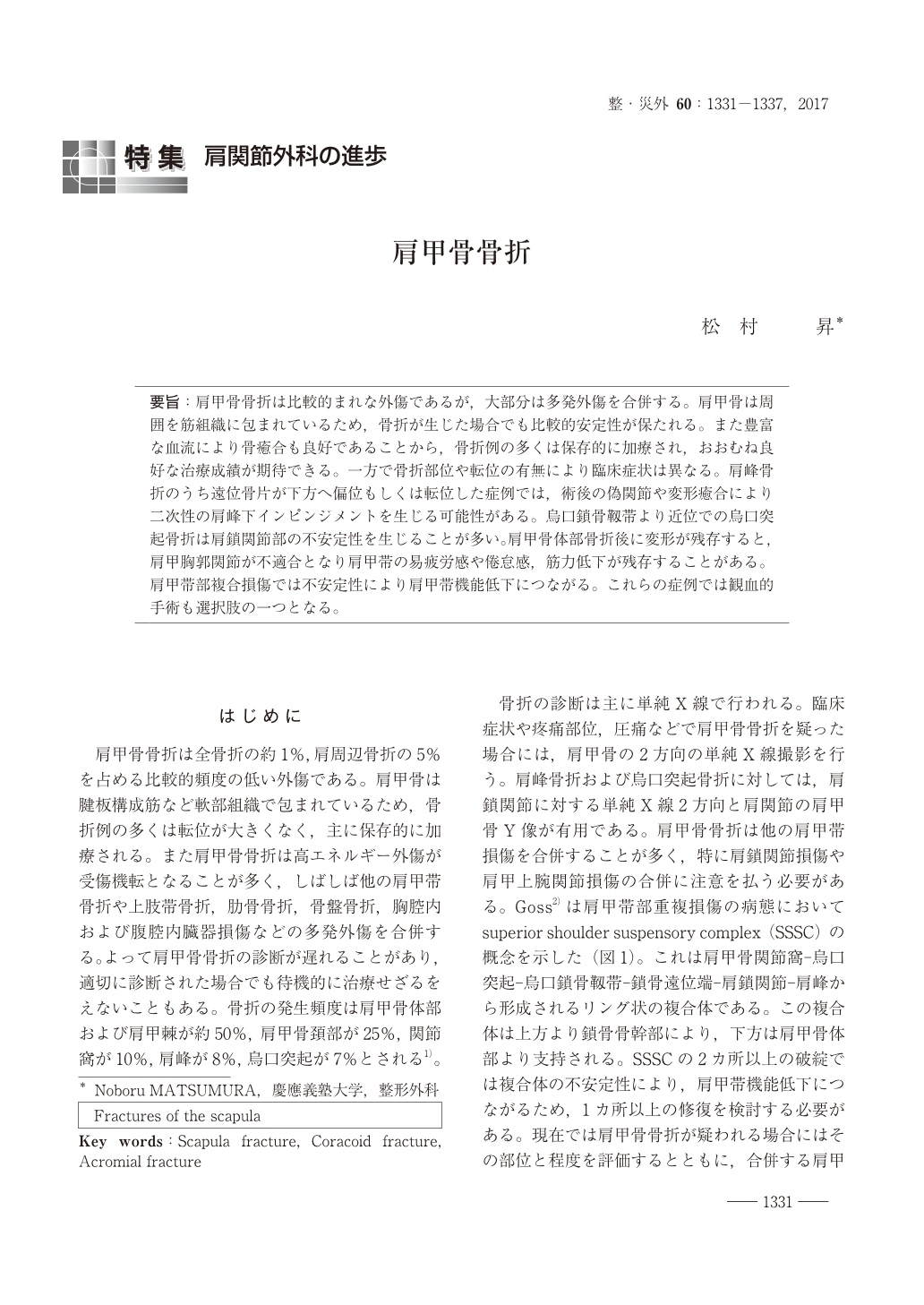- 著者
- 中道 憲明 松村 昇 塩野 将平 丹治 敦 戸山 芳昭 池上 博泰
- 出版者
- 日本肩関節学会
- 雑誌
- 肩関節 (ISSN:09104461)
- 巻号頁・発行日
- vol.31, no.3, pp.477-480, 2007
There are numerous reports of success with an open Bankart repair, using low recurrence of dislocation. Few studies indicate that subscapularis (SSC) tenotomy may result in postoperative SSC insufficiency. The purpose of this research was to measure the subscapularis muscle strength, muscle area and signal intensity by magnetic resonance imaging after the open Bankart procedure.<BR>A total of 22 patients were observed prospectively for a mean of 33 months (range 17-51 months). There were 11men and 1woman. The mean patient age at the surgery was 22.8 years old (range, 18-36 years old). All patients were right-handed. 8 patients had injured their shoulder of their dominant extremity. Internal rotation (IR) at 45 degrees abduction was at 60 degrees per second. The peak torques of both extremities was measured at the day before the operation, 6 months and 12 months after the operation. We calculated the ratio of the affected side to the unaffected side. The peak torques of ER and IR of the pre-operation were 13.5% and 18.5% respectively lower than those of the unaffected side. The peak torques of ER and IR that were measured at 6 months after the operation were 27.6% and 21.1% respectively lower than those of the unaffected side. The peak torques of ER and IR that were measured at 12 months after the operation were 18.4% and 0.2% respectively lower than those of the unaffected side. The area at 12 months after surgery was not significantly different from the preoperative area. However, the signal intensity at 12 months after surgery was significantly higher than that in the preoperative signal intensity. An open Bankart procedure using an L-shaped tenotomy approach did not decrease SSC muscle strength and volume. This procedure approach may lead to the deterioration of the subscapularis muscle.
1 0 0 0 肩甲骨骨折
- 著者
- 松村 昇
- 出版者
- 金原出版
- 雑誌
- 整形・災害外科 (ISSN:03874095)
- 巻号頁・発行日
- vol.60, no.10, pp.1331-1337, 2017-09-01
肩甲骨骨折は比較的まれな外傷であるが,大部分は多発外傷を合併する。肩甲骨は周囲を筋組織に包まれているため,骨折が生じた場合でも比較的安定性が保たれる。また豊富な血流により骨癒合も良好であることから,骨折例の多くは保存的に加療され,おおむね良好な治療成績が期待できる。一方で骨折部位や転位の有無により臨床症状は異なる。肩峰骨折のうち遠位骨片が下方へ偏位もしくは転位した症例では,術後の偽関節や変形癒合により二次性の肩峰下インピンジメントを生じる可能性がある。烏口鎖骨靱帯より近位での烏口突起骨折は肩鎖関節部の不安定性を生じることが多い。肩甲骨体部骨折後に変形が残存すると,肩甲胸郭関節が不適合となり肩甲帯の易疲労感や怠感,筋力低下が残存することがある。肩甲帯部複合損傷では不安定性により肩甲帯機能低下につながる。これらの症例では観血的手術も選択肢の一つとなる。
